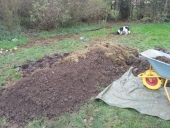

Christopher Weeks wrote:Hard salted black licorice from Denmark or Holland or wherever, the only trick is to be sure it's vegetarian.
I'd rather have almost anything else in the world than candy corn.

Ned Harr wrote:roof-non-penetration purist zero roof penetrations.
I'm not completely sure what you mean and I might also be biased coming from Velux country.
My roof is made of large (1 sqm-ish) wavy boards that overlap by one wave. The flashing for the windows is installed so it continues the overlapping in the same way which means it doesn't become the weak point you're worried about.
Velux is the brand name for a type of skylight. They have all kinds of cool configurations. Even a balcony flip up with railings type of design. There's also a company called Fakro that does the same style of windows.
Mine were installed i '74 and have only had to have a pane replaced because somebody broke the glass.
If you get a triple paned window then you're well on your to a lovely and isolated exterior.
In the picture you can see the difference in how much heat is lost on an old double paned themo window and a new tripple paned one.

Jay Angler wrote: By tying the comforter in, I can stand on the bed and just shake and the cover will more or less cover the comforter

Mercy Pergande wrote:Team down comforter with a washable cover!!!





Michael Qulek wrote:I've sprouted my own rootstocks from the seeds in store-bought fruit.